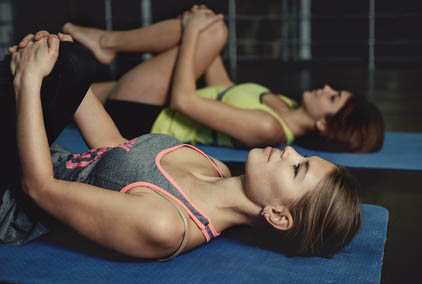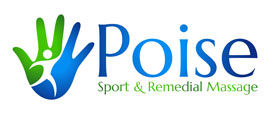Stretching is used for a number of reasons to keep the muscles healthy, strong and injury free. It can be as a way to ‘warm up’ or ‘cool down’ before and after further exercise, a means of exercise itself or as a rehabilitation tool to recovery from injury. As with exercise, there are different types of stretching and terms such as ‘static’, ‘dynamic’, ‘passive’ and ‘active’ can make the whole business of stretching seem confusing when deciding what is the most effective, appropriate and beneficial form of stretching to use and when.

Stretching has been understood as a way to increase the range of movement (ROM) of joints and lengthen muscles. The aim would be to reduce tension and muscle fatigue to prevent post-exercise soreness and the risk of injury. Stretching can also be used to strengthen muscles and increase flexibility.
Types of Stretching
There are a number of ways to stretch muscles and each has their own advantages and disadvantages. All can be grouped however into one of 2 categories – static or dynamic.
Static Stretches
Static stretches are performed without any movement. The stretch is achieved by taking up a particular position and holding it for a specific amount of time. There are 5 types of static stretches:
- Static Stretching: the body is placed into a position that stretches an individual or group of muscles under tension, which can be slowly increased and held to allow the muscles to lengthen. This is usually done between 20-60 seconds. This is a safe and effective form of stretching with a limited risk of injury.
- Passive (Assisted) Stretching: This is similar to static stretching but involves another person (or equipment) to help with the stretch by applying a greater force. Because this involves greater risk of injury it is important to make sure that the equipment is safe or that the person helping with the stretch has been carefully chosen. This type of stretch can be useful for rehabilitation from injury.
- Active Stretching: This form of stretching involves using the strength of opposing muscles (known as antagonists) to stretch the targeted muscles (the agonists). Contracting the antagonist muscles help relax the agonist muscles. For example, stretching one leg out in front of you as high as it can go, and holding it there without any assistance. Because of the difficulty involved, active stretches are usually only held for 10-15 seconds. It can be a good rehabilitation or conditioning tool.
- PNF Stretching: This involves stretching and contracting targeted muscles. It is an advanced form of training for increasing flexibility, range of movement (ROM) and muscle strength. There are variations to this type of stretching, known as ‘contract-relax’ or ‘hold relax’. The targeted muscles are positioned and then contracted for 5-6 seconds against force (usually applied by a person) to produce an isometric contraction, followed by relaxation for up to 30 seconds. This can be repeated.
- Isometric Stretching: This is similar to PNF stretching but the contractions are held for longer periods. A good example is the calf stretch. This type of stretching places high demands on the stretched muscles. A least 48 hours rest should be made in between sessions and only one stretch per muscle group should be performed. it is not recommended for children or growing adolescents.
Dynamic stretches
Dynamic stretches are performed with movement, usually a swinging or bouncing movement. There are 4 types of dynamic stretching:
- Ballistic Stretching: This uses momentum to force a part of the body past its normal ROM. It is an outdated form of stretching with injury risks attached to it. Other forms of stretching, such as PNF can be more effective.
- Dynamic Stretching: This uses controlled, soft bouncing/swinging motion, which is gradually increased, to move to ROM limits. The movement is slow, gentle and controlled and shouldn’t be confused with ballistic streching.
- Active Isolated (AI) Stretching: This is sometimes referred to as the ‘Mattes Method’, after the person who developed it (Aaron L Mattes). It contracts the antagonists muscles, which forces the agonist muscles to relax. Once in a starting position the antagonist muscles are contracted and the stretch held for 1-2 seconds before being released. This can be repeated 5-10 times. AI stretching is not without its detractors, although it is used by some professional athletes.
- Resistance (Loaded) Stretching: This type of stretching contracts and lengthens a muscle at the same time. A muscle group is stretched through its entire ROM while under contraction. This strengthens the muscles at the same time.
Stretching Research
Studies into the effectiveness of stretching is regularly undertaken, sometimes with confusing or conflicting results. They usually look at acute (immediate results) or training effects (streches done over a period of time) stretching.
Studies have shown an increase in joint ROM (usually passive ROM), particularly for static stretching. This may be caused not by increased muscle length but an increased tolerance to stretching. The greatest change to ROM was found for stretches held 15-30 seconds, with 10-30 seconds sufficient for increased flexibility.
Static stretching was shown to be detrimental as a warm up for running and jumping, resulting in ‘stretch induced strength loss’. It is unclear as to the cause (neural and mechanical factors have been cited, along with the duration of stretches).
Both static and dynamic stretching have been shown to be equally effective for improving ROM, although the studies have been conflicting about their effectiveness for warm up prior to exercise, although they can reduce stiffness and increase ROM. Static stretching is best for athletes requiring flexibility and dynamic is better suited for running and jumping. Neither have been shown to be effective at reducing the risk of injuries, although there is some evidence they can reduce musculotendinous injuries.
(14 April 2016)
